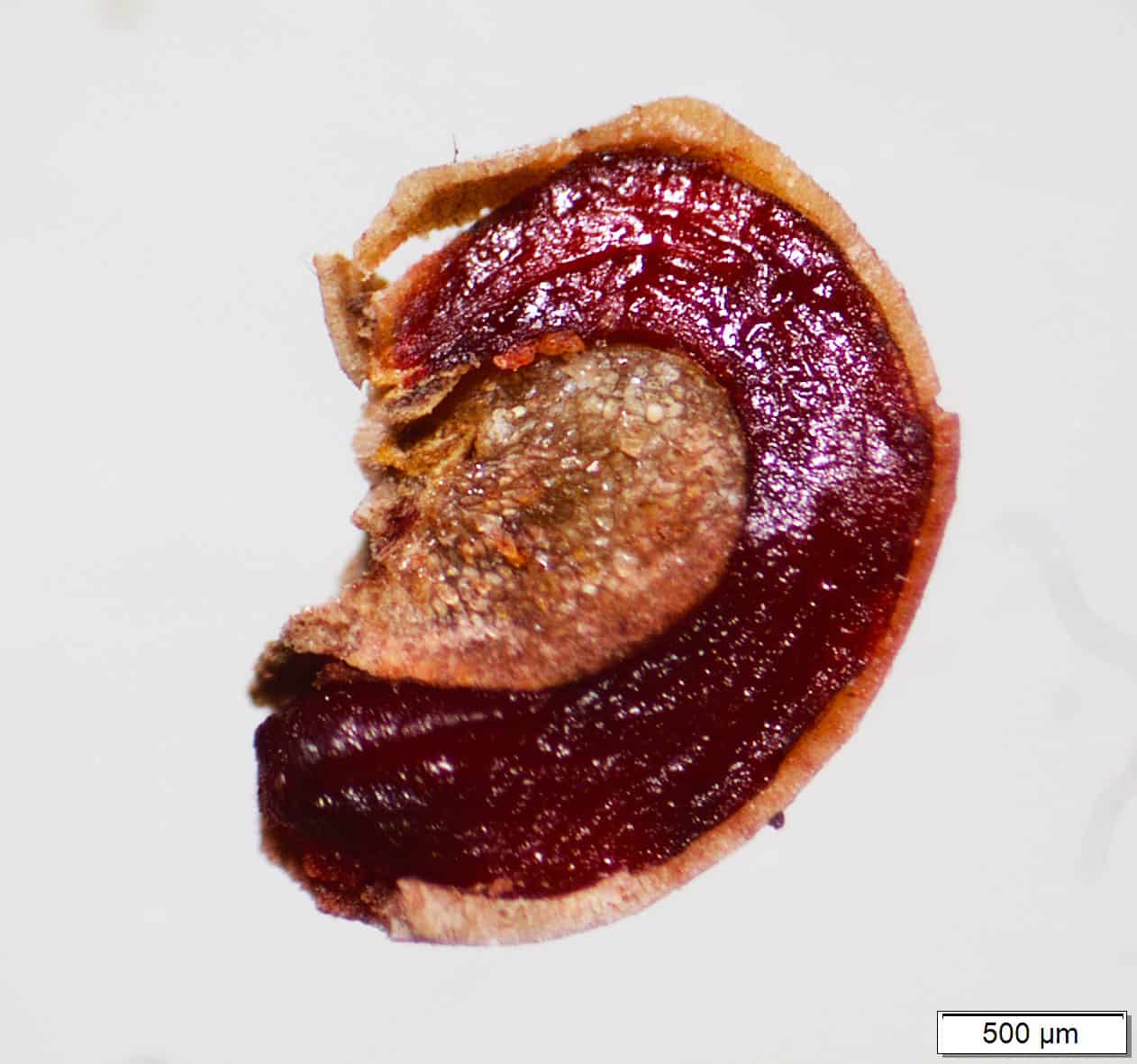Myrtle rust has been known to hit fleshy fruited plants particularly hard, making protection of these species crucial. One tool used to conserve vulnerable plants is seed banking. However, the seeds of fleshy fruited species are also some of the hardest to preserve. These seeds are more likely to be sensitive to conventional seed banking methods, such as drying and freezing.
Karin van der Walt, Conservation and Science Advisor at Ōtari native botanic garden, is on a mission to find ways to bank the seeds from the four Myrtaceae species in New Zealand that make fruit covered by a fleshy pulp. These are maire tawake (Syzygium maire), ramarama (Lophomyrtus bullata), rōhutu (Lophomyrtus obcordata) and Neomyrtus pedunculata, which also sometimes goes by the common name rōhutu.
In their recently published paper, Karin and co-author Jayanthi Nadarajan (Plant & Food Research) outlined the lessons they learned in attempting to bank seed from the Lophomyrtus and Neomyrtus species.
“Lophomyrtus and Neomyrtus are endemic genera, meaning they don’t occur anywhere else in the world” says Karin. “We wanted to know how viable their seeds are, and whether we can maintain viability when we store the seeds.”


They set out to test how sensitive the three species (L. bullata, L. obcordata and N. pedunculata) were to drying and cold storage. Between the two Lophomyrtus species, rōhutu was less sensitive than ramarama. Rōhutu seeds maintained viability when they were dried, and seeds from some populations (but not all) survived storage at -18°C. Ramarama, on the other hand, was much more sensitive.
“The ramarama we tested in this study did not like being dried,” says Karin. “Viability went from 80% down to 50%. There was also minimal survival of seeds stored at -18°C.”
They decided to look for clues as to why these seeds were so sensitive by looking at what was happening to the seeds’ fats at the various storage temperatures.
“For ramarama, we found there were significant crystallization and melting events happening between -39 and -14°C, spanning the conventional storage temperature of -18°C. This indicates that the fat is unstable at this range of temperature and could be why this species doesn’t like that temperature.”
Seed storage sensitivity for Neomyrtus pedunculata is still eluding researchers. This is because before the storage trials can begin, it is necessary to know how to grow the seeds.
“The end goal of seed banking is to grow plants,” says Karin. “It doesn’t help if you can freeze them but you can’t grow them when they come out of storage.”
The Neomyrtus seeds ended up being very difficult to grow.
“It took a 20-week wet stratification in a fridge to get them to germinate,” says Karin. “Even then, germination rates were quite low.”
Wondering if the seeds they had collected were actually dead, Karin performed a Tetrazolium Test, which adds a colourful stain to the tissue inside the seed that is alive.
“When I cut open the seed, I could see that they stained beautifully,” says Karin.
This means that Neomyrtus seeds have deep dormancy and require an as-of-yet-unknown cue (or cues) to wake up and get growing.
So what’s next? Besides continuing to solve the Neomyrtus puzzle, Karin will be working to optimise storage methods for Lophomyrtus. She will be testing different storage temperatures, especially for ramarama, and she will be looking at population-level differences in post-storage seed viability. She will also be testing freezing rates, as some species respond better to slow freezing and others to quick freezing. As a last resort, she may even try cryopreserving shoot tips.
“That is quite a tested method globally,” says Karin. “It is more resource intensive, but it can be better storage method for plants with complicated seeds.”
Karin hopes the results of this study can be used to facilitate storage for our taonga Myrtaceae.
“I’d love for people to be able use this work to understand what does and doesn’t work in terms of seeds storage for these species,” says Karin.
Article thanks to Jenny Leonard, images thanks to Karin van der Walt.
